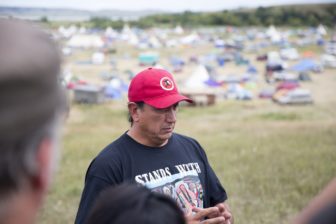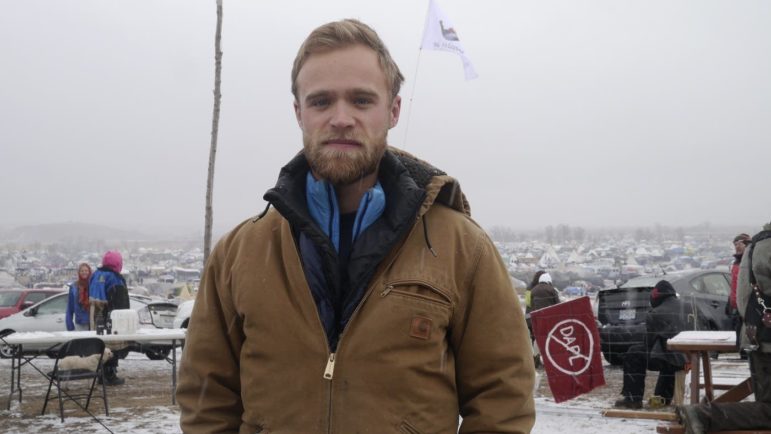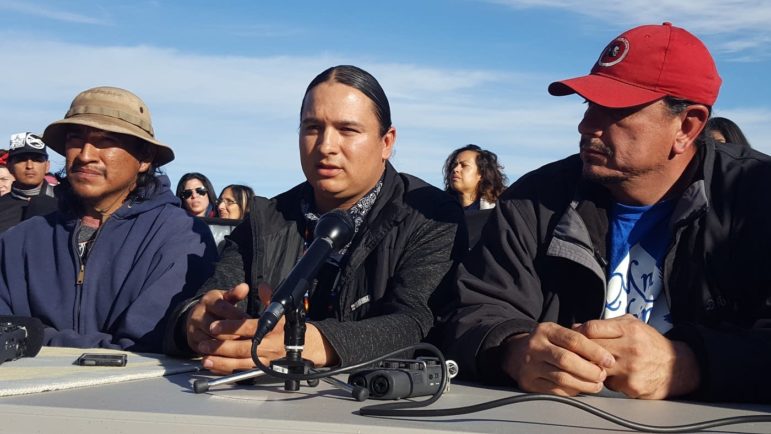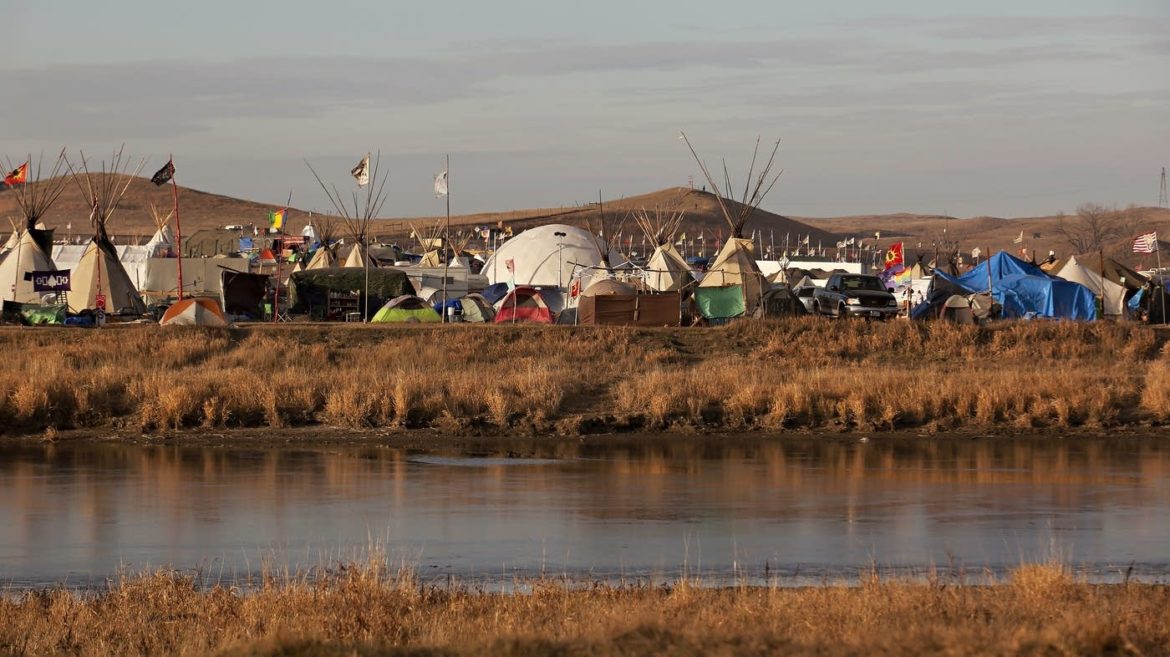Monday night in Bismarck, N.D., the chairman of the Standing Rock Sioux Tribe plans to speak at a public forum for the first time about a controversial encampment where tribal leaders say an estimated 10,000 people are staying to protest the Dakota Access Pipeline.
Tribal leader Dave Archambault and other protest organizers have said they plan to stay at the Oceti Sakowin camp and continue with protests despite receiving a letter from the U.S. Army Corps of Engineers that said all federal lands north of the Cannonball River will be closed to public access Dec. 5 for “safety concerns.”

Christopher Mark Juhn / for Minnesota Public Radio News
In this Sept. 8, 2016 file photo Standing Rock Tribal Chairman Dave Archambault spoke to the media.
In a statement Sunday, the Army Corps said it has no plans to forcibly remove protesters, but anyone staying on the camp after that date will be trespassing and subject to prosecution. The Army Corps has offered what it calls a “free speech zone” in a different location that it says is more accessible to emergency vehicles.
The camp currently sits on a prairie, surrounded by hills next to the Cannonball River. It’s called Oceti Sakowin. The name means Seven Council Fires and it represents the many bands that make up the Sioux Tribe.
At night, the protesters, who call themselves water protectors, go to sleep to the sound of singing, drums, and generators. Some sleep in Indian teepees, others in modern campers. Many are in tents. And a few have even built tiny wooden homes.
Oceti Sakowin is on federal land, but some 150 years past, according to treaties cited by tribal leaders, the land and the rivers belonged to the Lakota people or Sioux Tribe.
Tribal elders call the Standing Rock protest movement a spiritual war, a rebirth for Native Americans everywhere. More than 300 tribes are now represented, and the numbers are climbing. When visitors first arrive, they are greeted with “welcome home my relatives.”
They undergo required orientation meetings and protesters can then learn about early morning or late evening volunteer opportunities for after ceremonial prayers. Native men and women spread announcements through the camp on horseback. There’s a school for children, a large medical tent, kitchens throughout the prairie, and designated areas where people can find donated winter clothes.
“I spent my first week working in the kitchens, working in some of the different storage areas,” said Michael Penuelas, who has volunteered for more than a month.

Doualy Xaykaothao / Minnesota Public Radio
In this Nov. 24, 2016 photo Michael Penuelas of Washington State stands in the Oceti Sakowin Camp where he has been volunteering for a month.
Penuelas is white and a graduate of Stanford University, but he said that doesn’t matter in the camp.
“And one of the things they always say when you first arrive, when you meet the elders, they say, remember that no one here is higher than anyone else. I am no one, you are no one, that all of these constructs, that we in Western Society have built to value ourselves, in the grand scheme of things are not really that important or representative.”
One of the elders Penuelas has met is Virgil Taken Alive. He was born and raised on Standing Rock.
“I’ll probably end up dying and end up being buried here. My whole family is from Standing Rock, so long history,” he said, laughing.
But Taken Alive says things are not like in the past when Native tribes physically fought white men. “Not like in the days of Crazy Horse and Sitting Bull. We could physically fight against them and win, hence the treaties came,” he said. “But we do have something that is much more powerful than violence, and that is prayer. Water is life — Mni Wiconi — what the creator has given to us is for life. And especially the water. And to respect it. It has a life of its own.”
As news of the Army Corps’ intention to shut down the camp spread over the weekend, people like environmental activist Nick Tilsen expressed renewed resolve.
“Indigenous people are here to stay,” he said.

Doualy Xaykaothao / Minnesota Public Radio
Nick Tilsen with the Indigenous Peoples Power Project, pictured here on Nov. 26, 2016, says Native Americans are not going to move out of Oceti Sakowin Camp “unless it’s on our own terms because this is our treaty land.”
Tilsen is co-founder of the Indigenous Peoples Power Project and calls this their ancestral land. He says protesters will only move on their own terms.
“This is where people have been for thousands of years. To the Army Corps that sent that letter, the message from Indigenous people here, is the letter means nothing to us, because our purpose here is to stop the Dakota Access Pipeline.”
Texas-based pipeline developer Energy Transfer Partners is the primary company behind the $3.8 billion project. CEO Kelcy Warren stated in a press release earlier this month, “it is time for the courts to end this political interference and remove whatever legal cloud that may exist over the right-of-way beneath federal land at Lake Oahe.”
The Associated Press reports more than 560 protesters have been arrested in the area since August, including more than 30 at a mall over the holiday weekend. On Friday, protesters went to Bismarck’s Kirkwood mall and formed a prayer circle. By the end, police arrested at least 33 protesters for criminal trespass.
Bismarck native Rick Kringstad was at the mall that day. He’s like many locals who say they want the protesters out of Bismarck, away from businesses, and off federal land.
“What I believe they should do, is be done with it. We’ve had a pipeline under water since the early 1950s they did that, there’s no repercussions, no problem at all. I can see both sides, but enough is enough. And I would strongly like to see it be put an end to, in one way or another.”








